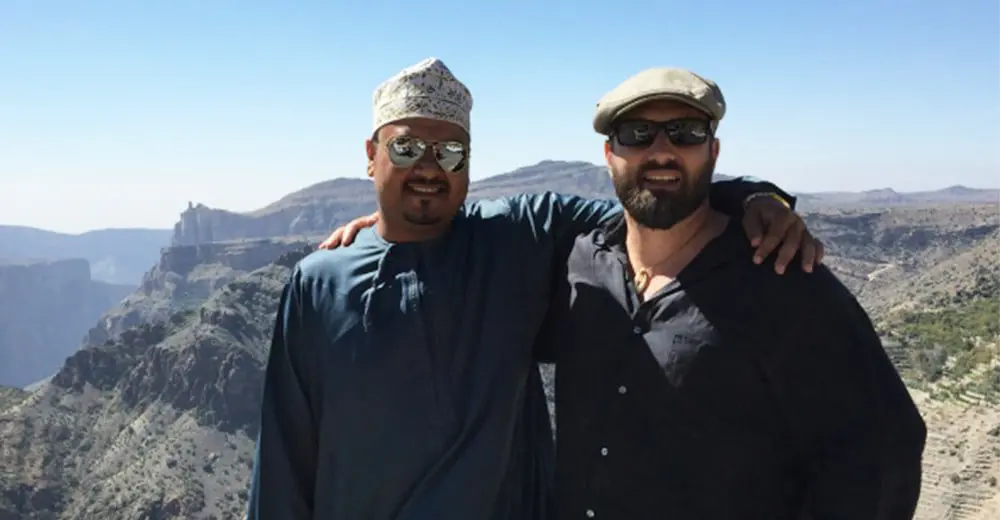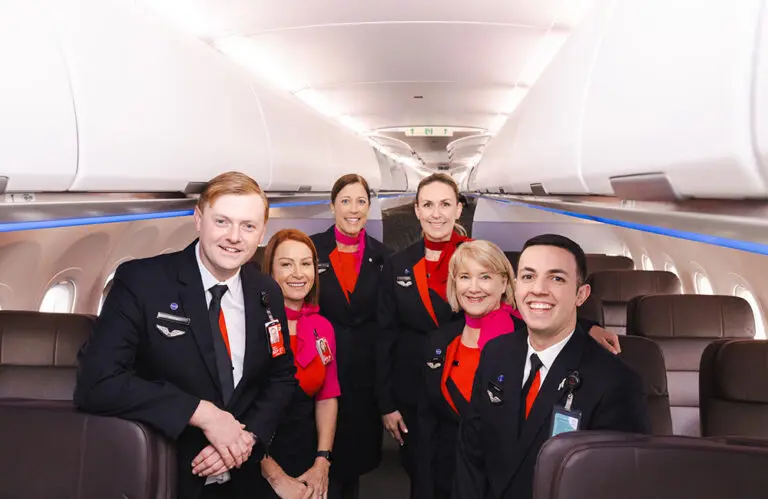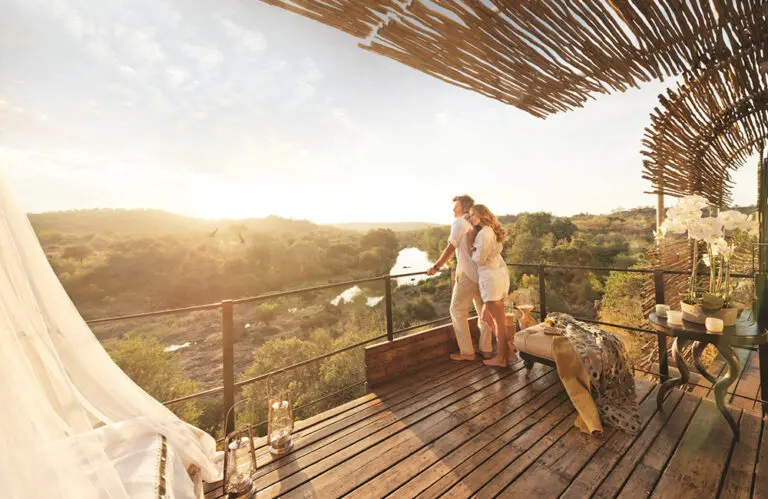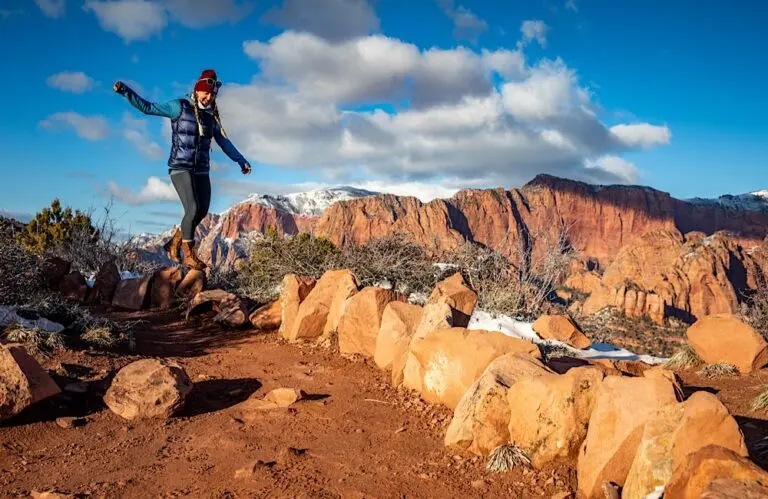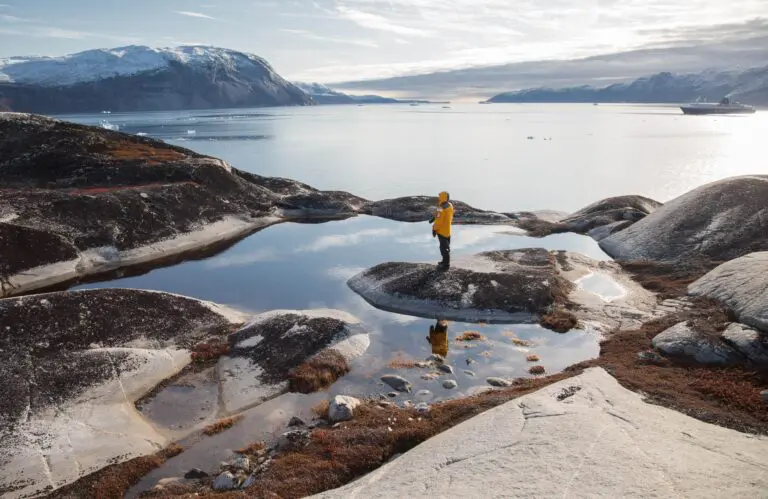It had been 16 years since my last visit to an Arab country, but this trip was to be very different from the “bones of my backside” backpacking adventures in the 90’s. This time I was travelling to Oman, and doing it in luxury!
After a 40 minute flight from Abu Dhabi we found ourselves on a two and a half hour drive from the coastal capital of Oman, Muscat, to Alila Jabal Akhdar, over 2000 metres up in the Hajar mountains.
The accommodation at Alila was outstanding, with stunning views over an impressive gorge and exquisite detail in the rooms and shared spaces. It is a lot cooler up in the mountains and while it was 33 degrees and humid in Muscat when we left, it was a very pleasant and dry 22 degrees at Jabal Akhdar.
Instead of driving ourselves we had a guide from Zahara Tours who picked us up in Muscat in a luxury air conditioned Landcruiser and drove us around the region for three days before returning to Muscat. I couldn’t afford a guide when backpacking and it is something I could definitely get used to. Kareem was always on time, and dressed in a different coloured dishdasha (robe) and musar (turban) for each of the four days we were with him.
In addition to driving us around and explaining the sights, he was able to enlighten us on those inexplicable little details you notice when travelling in a different country and culture. I found this particularly valuable when we only had six days in the country.
In three days we visited many ancient forts, deserted mud brick villages perched on mountain sides, plantations and farms. Most of the sights are up on the Saiq plateau which sits high up in the Hajar mountains and is one of the main agricultural regions for Oman. There are old mud brick forts to explore, date plantations to wander in and abandoned villages clinging to the mountainside.
The patches of lush greenery are that much more enticing and magical given the arid environment.
The highlight of the three days was visiting the goat market in Nizwa which takes place every Friday from about 6am but only lasts about two hours. With Omani’s milling around everywhere in their perfectly clean dishdasha’s exhibiting or bidding on sheep and goats: it was the spirit of Oman condensed into one small place.
There were even Wahhibi women from the desert far to the east with their indigo face masks, talking to each other in huddles and only stopping once in a while to yell a command at male relatives in the crowd.
Speaking of the spirit of Oman…What a wonderful, generous, honest and dignified people. A couple of words of Arabic, no matter how badly pronounced, inevitably produces a wide smile and the question of where you are from.
Another thing about the Omani’s is that they always wear their dishdasha’s and a kumaa (flat cap) and/or musur on their heads and there is never a mark on them, even in the goat market there was hardly a stain to be seen.
When we returned to Muscat we took up residence at The Chedi which is a little way out of town but perfect for lazing beside one of the three pools or the private beach.
The Sultan has made sure that the country’s new buildings reflect the traditional Omani style. Private residences cannot be above three stories and hotels need permission to go up to a maximum of ten. This means that Muscat is a handsome town of low-rise white buildings that all blend in with each other and create a lovely low key atmosphere. Muscat couldn’t be any further from the glitz of Dubai and Abu Dhabi!
Muscat is a very pleasant place to spend a few days, and for anyone flying on one of the gulf airlines who is considering a two or three day stopover, Muscat is ideal and only a 40-50 minute flight from Abu Dhabi or Dubai.
The Sultan Qaboos Grand Mosque is a “must do” experience and is one of the most beautiful buildings I have ever been in.
It is much more understated than some of the mosques in the other gulf states but it has a stately grandeur and sense of peace that is palpable. Predominantly built with light brown sandstone, the mosque is accented with carved timber ceilings and carved sandstone. The carpet in the main prayer hall is the second largest in the world. It took 600 women 3 years to weave it in 52 pieces and then another year to weave the pieces together inside the mosque.
My wife accidentally left her phone in the shoe stalls at the mosque. We didn’t figure it out until we were in the Mutrah souq, which is about 1/2 an hour’s drive away from the mosque. We caught a taxi back to the mosque and by the time we came out (with the missing phone), taxi drivers I’d never seen before were asking if we’d found it and when we answered in the affirmative there was a small cheer from a group of Omani’s standing around outside.
When we got back to the souq, the chief of the taxi rank gave us a speech about how nothing is ever stolen in Oman and I’m inclined to believe him.
The Mutrah souq is the oldest surviving souq in the gulf and is a maze of alleyways that is great fun to get lost in and check out the textiles, brassware, frankincense, spices etc. Colourful pashminas and musar’s are good value and at the time of writing, frankincense is not a problem to bring back into Australia. A full men’s costume will set you back about 10 Riyals if you bargain…that’s dishdasha, kumaa and musur (I have two full costumes…).
For the ladies there are some exquisite black dresses in the Mutrah souq, there’s a whole alleyway dedicated to them and they are often accented with fine and not too showy silver and cream lacework.
The port of Old Muscat is bounded by two old Portuguese forts and is worth a visit as it contains the Sultan’s Palace, which is an interesting looking building who’s facade is made up of bright metallic coloured mushrooms. It’s also nice to wander the quiet streets and soak up the atmosphere.

A couple of restaurants in Muscat where you can sample traditional Omani food are Kargeen and Bait Al Luban which is just a short walk from Mutrah Souq. Both offer Shuwa, which is spiced meat wrapped in banana leaves and cooked underground in a sand over for 1-2 days. It is served with rice and the version I had at Kargeen came with a little bowl of clarified butter to pour over the rice…heavenly! Both restaurants also have western options.
Taxi’s are un-metered in Oman but the drivers seem pretty honest. In Muscat the prices are set: from the Chedi to Mutrah Souq or Old muscat was 7 Riyals (AUD25) and from Sultan Qaboos Mosque to Mutrah or the Chedi was 3 Riyals (AUD11)
Eating in hotels is expensive but if you’re up for some cheap and cheerful Indian food you can get two filling meals with rice and soft drinks for under 3 Riyals in the ubiquitous Indian restaurants in the towns and cities. Also make sure you try the halwa, it’s particularly good in Nizwa souq.
It was with heavy hearts that we boarded the plane to head home. Oman is a fantastic place to experience traditional Arabic culture and hospitality and the people are amongst the best I have encountered anywhere in the world. If you would like to experience traditional Arabic culture in an extremely safe environment, Oman is the place to do it. While not a dirt cheap destination, the luxury options are breathtaking.
Luckily Oman is a big country and we barely scratched the surface, I think next time it’ll be the green, semi tropical south or maybe the sandy deserts of Sharqiya…the possibilities are endless and I’m definitely going to return!
All products and experiences can be booked through Infinity Holidays.
For more info visit the very helpful and Australia oriented website http://www.tourismoman.com.au/



